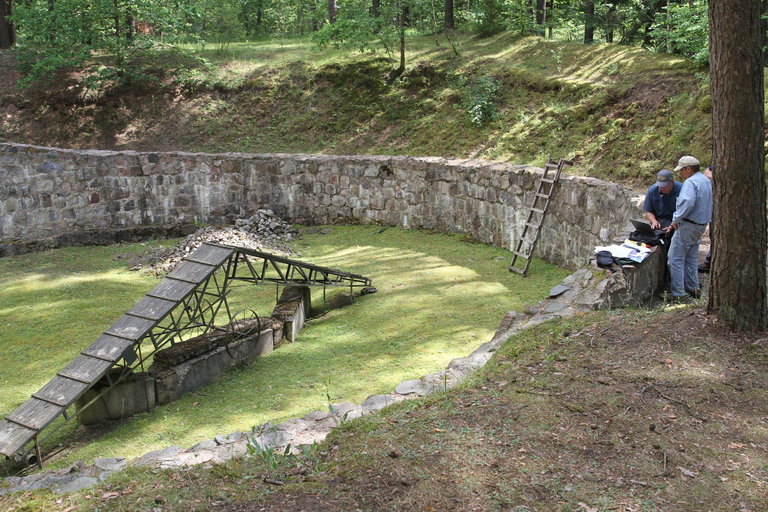A group of archaeologists and mapmakers seems to have discovered a long-forgotten hand-dug tunnel. The 70-year-old tunnel, dug mostly by hand by 80 Jews, was a means to escape a Nazi extermination site located in Lithuania. Ponar, the Lithuanian site, was home to mass graves and roughly 100,000 deaths.
Researchers used radar and radio waves to search below ground and found the 100-foot passageway sitting approximately seven feet below the surface. The entrance to this tunnel was previously found in 2004 but left unmarked. By unearthing the entire tunnel, the researchers can illuminate and support heroic accounts of escape from the Nazi facility. Richard Freund, a professor at the University of Hartford in Connecticut, spoke of the importance of the discovery. Not only does it help support escape stories, but can be used to estimate the number of burial pits on the grounds.
The group of researchers is working with NOVA, the PBS science series, to broadcast a documentary next year. The team also uncovered a large burial pit containing the ashes of roughly 7,000 people, the 12th pit found in Ponar to date. Undoubtedly, Ponar witnessed the death of tens of thousands of Lithuanian Jews from nearby Vilnius, from 1941 to 1944.
After extensive research on site, Dr. Freund has come to call Ponar the ground zero of the Holocaust, due to the systematic murder carried out on the grounds. Roughly 100,000 people died at Ponar, including 70,000 Jews. In 1943, when it became apparent the Soviets would take Lithuania, the Nazis began to cover up the evidence of the mass killings by forcing Jewish prisoners to exhume the bodies then burn them and bury the ashes. These prisoner groups were referred to as Leichenkommando or “corpse units” while in action, but as the “Burning Brigade” in hindsight. Knowing they would be executed after their forced task was complete, roughly half of these prisoners took to digging a tunnel for 76 days with their bare hands or any tools they could find.
On April 15th, 1944, when the moon was dark, the prisoners daringly crawled through the two square foot tunnel to the forest. Unfortunately, the noise alerted the Nazi guards who pursued the prisoners with guns and dogs. Only 11 prisoners survived to tell their story. In an attempt to find the tunnel without disturbing the remains of the Jewish prisoners Dr. Freund and his colleagues used electrical resistivity tomography (ERT) and radar, both non-invasive tools, to search for the tunnel. ERT is essentially an MRI for the ground; it identifies stones, metal, and clay along with soil disturbances. The radar tool used emits FM radio waves 10 feet into the ground, which refract off surfaces depending on the material’s density. With the help of these tools, the team found a previously unidentified pit, which may be the largest grave on site, containing as many as 10,000 bodies. The team was not only searching for the precious remains of lost family members but also the historically significant Great Synagogue of Vilnius, which was destroyed by the Nazis in the war.
Jon Seligman, archaeologist with the Israel Antiquities Authority, spoke to the significance of this work. He felt that it was a tremendously important step, not only to reclaim the remains of loved ones and precious artifacts, but also to raise awareness on just how many atrocities the Jewish population in this area faced. Furthermore, he felt it is necessary to complete the history books with an accurate account of events.
Vilnius had been a busy Jewish city before the onset of World War II with a population of about 100,000. Once the Soviets invaded and took Lithuania over, an elementary school was quickly built on top of the city’s Great Synagogue. The team of experts was able to find lots of remarkable artifacts by using radar technology.
Dr. Freund eloquently said, “If we had never discovered the tunnel, people would have thought in another 20 years it was a myth, and they would have questioned – What do we really know happened? This is a great story about the way that people overcame the worst possible conditions, and still had this hope that they could get out.”
